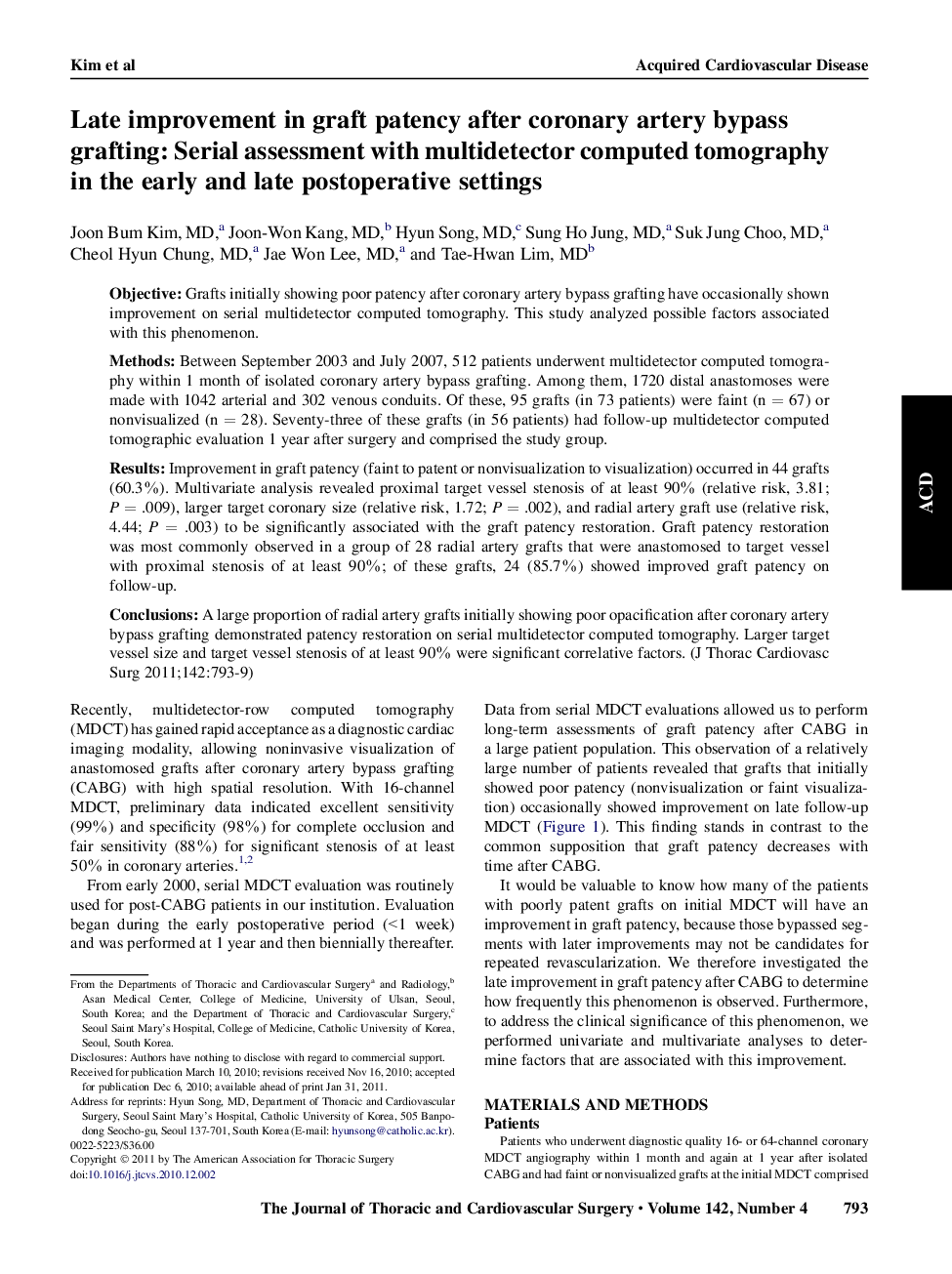| Article ID | Journal | Published Year | Pages | File Type |
|---|---|---|---|---|
| 2981861 | The Journal of Thoracic and Cardiovascular Surgery | 2011 | 7 Pages |
ObjectiveGrafts initially showing poor patency after coronary artery bypass grafting have occasionally shown improvement on serial multidetector computed tomography. This study analyzed possible factors associated with this phenomenon.MethodsBetween September 2003 and July 2007, 512 patients underwent multidetector computed tomography within 1 month of isolated coronary artery bypass grafting. Among them, 1720 distal anastomoses were made with 1042 arterial and 302 venous conduits. Of these, 95 grafts (in 73 patients) were faint (n = 67) or nonvisualized (n = 28). Seventy-three of these grafts (in 56 patients) had follow-up multidetector computed tomographic evaluation 1 year after surgery and comprised the study group.ResultsImprovement in graft patency (faint to patent or nonvisualization to visualization) occurred in 44 grafts (60.3%). Multivariate analysis revealed proximal target vessel stenosis of at least 90% (relative risk, 3.81; P = .009), larger target coronary size (relative risk, 1.72; P = .002), and radial artery graft use (relative risk, 4.44; P = .003) to be significantly associated with the graft patency restoration. Graft patency restoration was most commonly observed in a group of 28 radial artery grafts that were anastomosed to target vessel with proximal stenosis of at least 90%; of these grafts, 24 (85.7%) showed improved graft patency on follow-up.ConclusionsA large proportion of radial artery grafts initially showing poor opacification after coronary artery bypass grafting demonstrated patency restoration on serial multidetector computed tomography. Larger target vessel size and target vessel stenosis of at least 90% were significant correlative factors.
